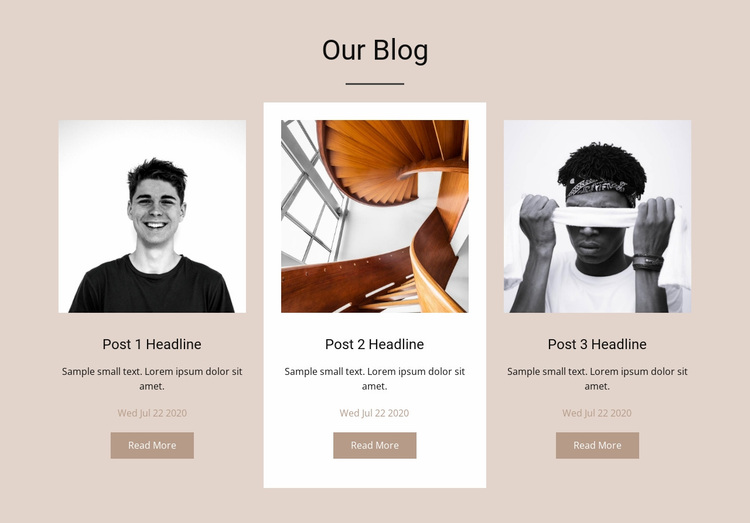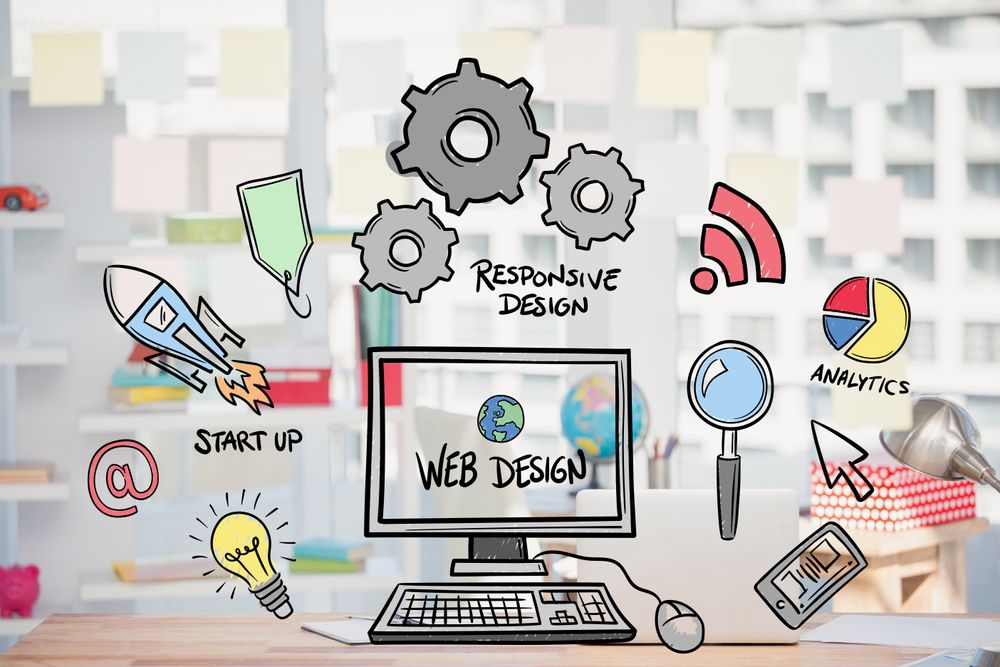The Ultimate Overview to Modern Site Layout Trends
In the ever-evolving digital landscape, contemporary site layout trends play a critical role in shaping user experience and involvement. From the rise of minimalist design concepts that focus on simplicity to the influence of bold typography in specifying brand identification, each aspect adds to a natural on-line existence.
Minimalist Design Principles
Minimal style concepts highlight the concept that less is extra, supporting for simpleness and functionality in visual interaction. This technique strips away unnecessary aspects, concentrating instead on essential elements that communicate the intended message properly. By prioritizing clearness, minimal style enhances user experience, permitting visitors to navigate web sites effortlessly.
Core tenets of minimalist design include making use of adequate white room, which develops a sense of balance and organization. This adverse room not only guides the customer's interest to essential elements yet likewise promotes a soothing visual ambience. Additionally, a limited color scheme is frequently utilized, making use of soft colors or monochromatic systems to maintain visual communication and avoid overwhelming the individual.
Typography plays an essential function in minimalist layout, where clear font styles are selected for their simpleness and effectiveness in connecting material. Ultimately, minimal layout principles grow a concentrated environment that encourages individuals to engage with the material, enhancing the general effectiveness of modern-day website layout.
Vibrant Typography Choices
Welcoming bold typography options has actually come to be a defining feature of modern internet site style, as it properly catches attention and conveys strong messaging. Developers are progressively utilizing typography not merely as a practical aspect yet as an essential visual component that boosts the general visual and user experience.

In addition, the association of strong typography with minimalist layout concepts enables striking contrasts, boosting readability while keeping aesthetic charm. Using whitespace around vibrant message better highlights its significance, guaranteeing that the message reverberates with the target market.
As digital landscapes end up being more competitive, leveraging bold typography enables brands to differentiate themselves and leave an enduring impact. The mindful choice of typefaces and their application can stimulate feelings, develop tone, and drive action, making bold typography an important tool in modern website design. Inevitably, it is an effective way to boost storytelling and make certain that key messages are not only seen but additionally really felt.
Mobile-first and receptive Style
Mobile-first and responsive design has actually become a crucial principle in contemporary site development, reflecting the increasing dependence on mobile gadgets for accessing on the internet content. As customer habits shifts towards mobile surfing, developers should prioritize creating experiences that adapt effortlessly throughout numerous screen sizes and resolutions.
A responsive design makes certain that an internet site immediately readjusts its format, pictures, and functionality based on the gadget being used. Mobile-first design advocates for establishing websites originally for smaller screens, consequently scaling up to bigger displays.
Implementing mobile-first and receptive concepts not only accommodates user choices but also aligns with seo (SEARCH ENGINE OPTIMIZATION) practices. Significant internet search engine, like Google, focus on mobile-friendly web sites in their positions, making it important for companies to adopt these layout methods. In a competitive digital landscape, welcoming responsive and mobile-first layout is not simply an option; it is vital for making sure availability and involvement with a varied audience.
Involving Microinteractions
Microinteractions play a critical role in boosting user interaction and overall site experience, specifically in the context of receptive and mobile-first design. These subtle design elements offer instant feedback to customers, making communications more satisfying and user-friendly. Instances consist of button animations, notice notifies, and filling indications, which not just guide customers look these up however also produce a feeling of link with the user interface.
Incorporating interesting microinteractions can dramatically improve functionality by lowering cognitive lots. When users get aesthetic or acoustic comments upon doing actions, such as clicking a switch or sending a kind, they feel a lot more certain in their selections. This cultivates a smoother navigating experience, ultimately increasing user retention.

As site layout fads remain to advance, the value of microinteractions can not be overemphasized. They work as the refined yet powerful touchpoints that change ordinary communications right into amazing experiences, therefore raising the total performance of modern-day web layout.
Sustainable Website Design Practices
Lasting website design methods are ending up being progressively vital as the digital landscape grows and environmental problems rise. Programmers and designers are recognizing their blog duty to create sites that not just offer customer demands but likewise decrease environmental influence. This approach encompasses a number of essential techniques.
Firstly, enhancing power intake is vital. Internet sites ought to be made to pack swiftly and efficiently, which reduces web server energy usage and improves user experience. Strategies such as photo compression, minimizing HTTP requests, and using modern-day coding techniques contribute significantly to this goal.
Second of all, choosing environment-friendly hosting companies is vital - website design. Several organizing business are currently powered by renewable resource resources, making it possible for internet sites to run in a more sustainable fashion. This selection mirrors a commitment to minimizing carbon impacts
Furthermore, embracing a minimalist design can improve sustainability. Less elements on a page cause much less information transfer, which not only quickens loading times yet likewise conserves resources.
Lastly, advertising digital access makes certain that internet sites get to a larger audience without unnecessary bloat, aligning customer experience with environmental responsibility. By incorporating these sustainable methods, internet developers can contribute positively to both user involvement and the planet's health.
Final Thought
In recap, contemporary website design trends emphasize the assimilation of minimalist principles, strong typography, and receptive layout to boost customer experience. Involving microinteractions add to unforgettable interactions, while sustainable methods promote for environmentally conscious growth. Collectively, these components not only raise visual appeal but additionally improve performance, ensuring that web sites are both aesthetically striking and user-friendly. Taking on these trends is necessary for developing impactful digital experiences that resonate with customers in a visit this site significantly competitive on-line landscape.
In the ever-evolving electronic landscape, contemporary internet site layout fads play an important duty in shaping individual experience and engagement. By prioritizing quality, minimal layout boosts individual experience, permitting site visitors to navigate internet sites effortlessly.
Inevitably, minimalist style concepts cultivate a focused setting that urges individuals to engage with the web content, improving the total performance of modern website design.Microinteractions play a crucial role in enhancing user involvement and general internet site experience, especially in the context of receptive and mobile-first design.In summary, modern site design patterns highlight the integration of minimal principles, vibrant typography, and receptive style to improve customer experience.